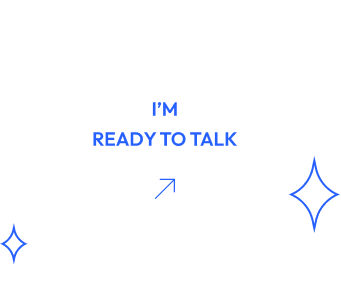
Best Tech Pack Software for Fashion Designers
Published: 4/30/2025
Creating a well-structured tech pack or spec sheet is one of the most critical steps in fashion design. A good tech pack is a blueprint for manufacturers that contains every detail needed to ensure accurate production, such as fabric specifications, measurements, and construction guidelines. Without a thorough tech pack, you can have expensive mistakes, delays, and inconsistencies in the final garment. That’s why tech pack software has become an integral tool for designers and apparel brands.
These platforms streamline the process by automating repetitive tasks, enhancing collaboration, and minimizing errors. Choosing the right software can significantly boost efficiency in your product development cycle.
Here’s a list of the top tech pack clothing software options available.
1. AI Techpacks
AI Techpacks automates tech pack creation for designers and manufacturers. It allows you to upload your garment image and enter specifications (optional), and the system generates the required documentation.
Key Features
- AI-powered Tech Pack Creation: Automates the process, reducing manual work and ensuring accurate documentation.
- Customizable Templates for Any Design: Includes flat sketches and technical sketches.
- Seamless Integration with Popular Design Tools: Works with known garment design software.
- Pro Membership Features:
- Advanced Automation: Bulk tech pack creation, auto-generated measurements, smart suggestions.
- Enhanced Customization: Branded tech packs, customizable layouts, and pre-filled templates.
- Collaboration Tools: Team access, commenting, version control.
- AI-Powered Insights: Error detection, cost estimation, and sustainability suggestions.
- Integration with Industry Tools: Export options, API access, cloud storage.
- Training and Support: Onboarding tutorials, priority support, and expert access.
- Exclusive Content: Premium resources, community membership, and discounts.
AI Techpacks offers robust capabilities for speeding up tech pack creation. Even designers who prefer complete manual control over every aspect of layout and data will find it highly useful because you can customize the tech pack. Get your first tech pack free.
2. Techpacker
This tech pack software offers a visual, card-based system for creating tech packs. Rather than using standard document layouts, each component, such as sketches, materials, and measurements, is stored as a modular “card.”
This approach makes it easy to reuse design elements across different projects, which helps maintain consistency and efficiency.
Key Features
- Card-Based System: Modular creation of tech packs.
- Real-Time Collaboration & Version Control: Keeps teams aligned.
- One-Click Export: PDF and Excel sharing made simple.
- Tool Integrations: Adobe Illustrator, Google Drive, and more.
While Techpacker has been a go-to for digital tech packs, it comes with constraints that limit speed and flexibility—especially when compared to AI-powered tools like AI Tech Packs. Because Techpacker is entirely cloud-based, it requires a stable internet connection and doesn’t support offline workflows. Users also report performance slowdowns when dealing with large images or complex files, and its layout customization options are relatively rigid. For designers who want fast iteration, flexible formatting, and automation without the lag or learning curve, other tools offer a more streamlined and intelligent alternative.
Additionally, while the platform is intuitive, it does take some learning to adapt to the card-based layout, especially for those accustomed to traditional document formats.
3. WFX Tech Pack Software
The platform is part of the WFX cloud-based Product Lifecycle Management (PLM) suite, which is built to handle more complex product development workflows.
Unlike stand-alone tech pack solutions, WFX merges detailed technical documentation with supply chain management, sourcing, and inventory tracking—suitable for larger fashion companies juggling multiple product lines.
Key Features
- Comprehensive PLM Integration: Links tech packs with sourcing and production data.
- Auto-Grading: Simplifies sizing specifications.
- Built-In BOM Management: Tracks fabrics, trims, and packaging details.
- Collaborative Commenting & Version Control: Streamlines communication and oversight.
Though WFX brings robust functionality, it might be too extensive for small brands needing only basic features. The platform uses a custom pricing model, so you’ll need a quote rather than picking from set packages.
Some users also find exporting data to external systems somewhat challenging, requiring extra steps to move information into spreadsheets or other applications.
4. Audaces Idea
Audaces Idea is a design-oriented tech pack software that integrates seamlessly with patternmaking and cost-estimation tools. Unlike many conventional platforms, it gives designers full control over how specifications, annotations, and measurement charts are organized.
Key Features
- Customizable Layouts: Freedom to structure your tech packs exactly as you prefer.
- Automated Pre-Costing: Provides real-time cost estimates based on design elements.
- Integration with Other Audaces Tools: Minimizes manual data input by connecting to other patternmaking and design software.
Audaces Idea is highly versatile for design integration but doesn’t offer the full-scale PLM capabilities that larger apparel companies may need. It’s most popular in Latin America and Europe, so English-language resources and specialized support can be somewhat limited.
Still, for independent designers and mid-sized brands seeking flexible layouts and built-in cost estimation, Audaces Idea is a strong option.
5. Clothing Tech’s Fashionr™
Fashionr™ by Clothing Tech is an advanced tech pack software that marries 3D design, AI-powered automation, and real-time collaboration. Fashionr™ lets designers work in a 3D environment where tech pack details are extracted automatically. The software also relies on AI to handle tasks like patternmaking, costing, and digital sewing, cutting down the manual adjustments designers typically face.
Key Features
- 3D-to-Tech Pack Automation: Automatically generates documentation from 3D garment data.
- AI-Driven Tools: Patternmaking, digital sewing, and cost estimation.
- Real-Time Multi-User Collaboration: Everyone works on the same garment version simultaneously.
- PLM Integration: Syncs with some existing PLM systems.
As Fashionr™ is relatively new, its market share and user community are still growing, so tutorial resources and widespread adoption may be somewhat limited. Also, because it heavily relies on 3D workflows, brands not yet using 3D design might need additional training or software to unlock the platform’s potential.
6. Adobe Illustrator + Spreadsheets
Many designers still take a more hands-on approach by pairing Adobe Illustrator with spreadsheets (Excel or Google Sheets). Illustrator is typically used for technical sketches and design layouts, while spreadsheets track measurements, materials, costs, and assembly instructions.
This method offers total creative control over formatting and structure—no pre-built templates are necessary.
Key Features
- No Additional Software Fees: Ideal for those already paying for Adobe Creative Cloud.
- Fully Customizable: You control every detail of your tech pack’s appearance.
- Widely Compatible: PDF and Excel are industry-standard formats.
That noted, this method demands considerable manual work. There are no real-time collaboration tools, version control systems, or automation features. Managing numerous designs via separate spreadsheets can quickly become tedious, and keeping track of updates across multiple versions is a recipe for errors if not carefully managed.
7. PLM Software Solutions (Lectra, EDITED, etc.)
Product Lifecycle Management (PLM) platforms like Lectra, EDITED’s Backbone PLM, and others encompass the entire product development process—not just tech pack creation. These platforms integrate design, sourcing, inventory, and even sales tracking. They provide a single source of truth for teams across a fashion business.
PLM solutions generally include in-depth tech pack tools, enabling designers to build complete technical documents linked to material libraries, cost trackers, and supplier databases. Many support integration with Adobe Illustrator, letting design and development teams exchange data seamlessly.
Key Features
- Centralized Libraries: Shared materials and components for cross-team use.
- Robust Collaboration & Workflow Automation: Streamlines interdepartmental tasks.
- ERP & Supply Chain Integrations: Offers comprehensive oversight from conception to distribution.
However, due to their complexity and higher price tags, PLM systems aren’t ideal for smaller operations. Implementations can be time-intensive, requiring data migration, training, and dedicated management.
PLM software is most beneficial for large apparel brands managing hundreds of styles per season, with the need for strict cost controls and supplier coordination.
What to Look for in a Tech Pack Software
Ultimately, choosing the right tech pack software depends on your brand size, specific requirements, and preferred workflows. While some solutions focus on automation, others prioritize deep customization or offer enterprise-level data management.
Here are some essential considerations.
Ease of Use
If you or your team aren’t highly tech-savvy, choosing a platform with a simple and intuitive interface is crucial. For example, AI Techpacks is designed with an intuitive layout requiring minimal setup, making it easy for designers to create tech packs without extensive training or experience.
On the other hand, PLM solutions and advanced 3D platforms like Fashionr™ or Lectra often have a steeper learning curve, requiring more training to take full advantage of their features.
Automation Features
Automation can significantly reduce manual labor and improve efficiency. Platforms like AI Techpacks and Fashionr™ automate tasks such as data structuring, patternmaking, and cost estimation, cutting down on repetitive work.
In contrast, using Illustrator and spreadsheets requires a more hands-on approach, which can be prone to human error and time-consuming when updating multiple styles.
Collaboration Tools
For teams and manufacturers working together, real-time communication can speed up approvals and reduce costly mistakes. Platforms like Techpacker, WFX, and Fashionr™ offer built-in commenting, version control, and live syncing, ensuring that updates are tracked efficiently.
Without these features, you may find yourself juggling multiple email chains and outdated file versions, leading to miscommunication between designers, product developers, and factories.
Integration Options
If your workflow already relies on tools like Adobe Illustrator, Excel, or a PLM system, choosing software that syncs smoothly with your existing toolkit may be best.
Techpacker integrates well with Illustrator and Google Drive, making transferring design elements between platforms easy. PLM solutions like Lectra or EDITED’s Backbone PLM connect to ERP systems and other enterprise tools, providing a centralized product management solution.
In contrast, Audaces Idea works best within its own ecosystem, offering an all-in-one approach for brands that prefer a tightly integrated toolset.
Pricing & Accessibility
Tech pack software varies significantly in cost and accessibility, depending on the features offered. Freelancers or small fashion labels might find AI Techpacks more affordable as it’s a budget-friendly option that does not require extensive training.
However, larger enterprises managing complex supply chains typically need robust PLM systems like WFX or Lectra, which offer comprehensive product lifecycle management but come with higher fees and greater training requirements.
Final Thoughts: Choosing the Right Tech Pack Software
Selecting the ideal tech pack software revolves around understanding your brand’s scope, design process, and growth plans. Before deciding on a platform, consider using free trials or demos to see how each tool aligns with your specific needs. With AI Techpacks, your first tech pack is free! Get it now by uploading your reference image.
You may also like: Tech Packs in Clothing: A Complete Guide
Get in Touch
Have questions or need support? Contact us at
info@muse.place.


